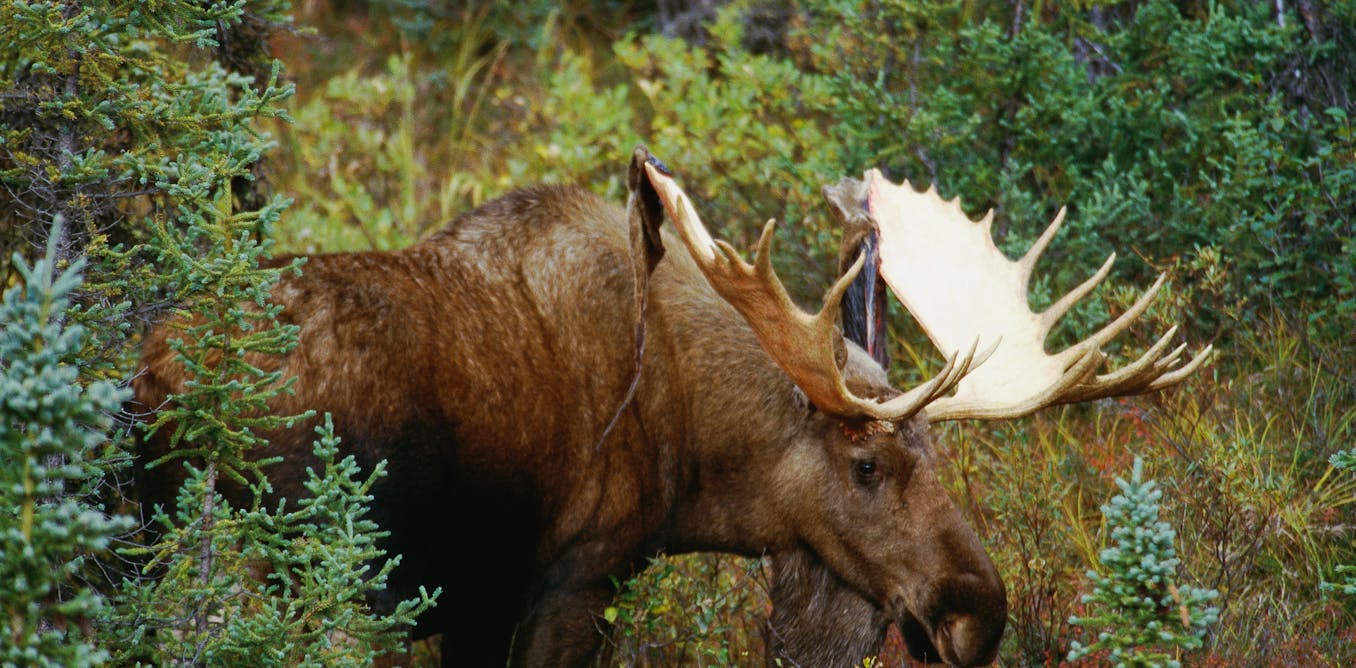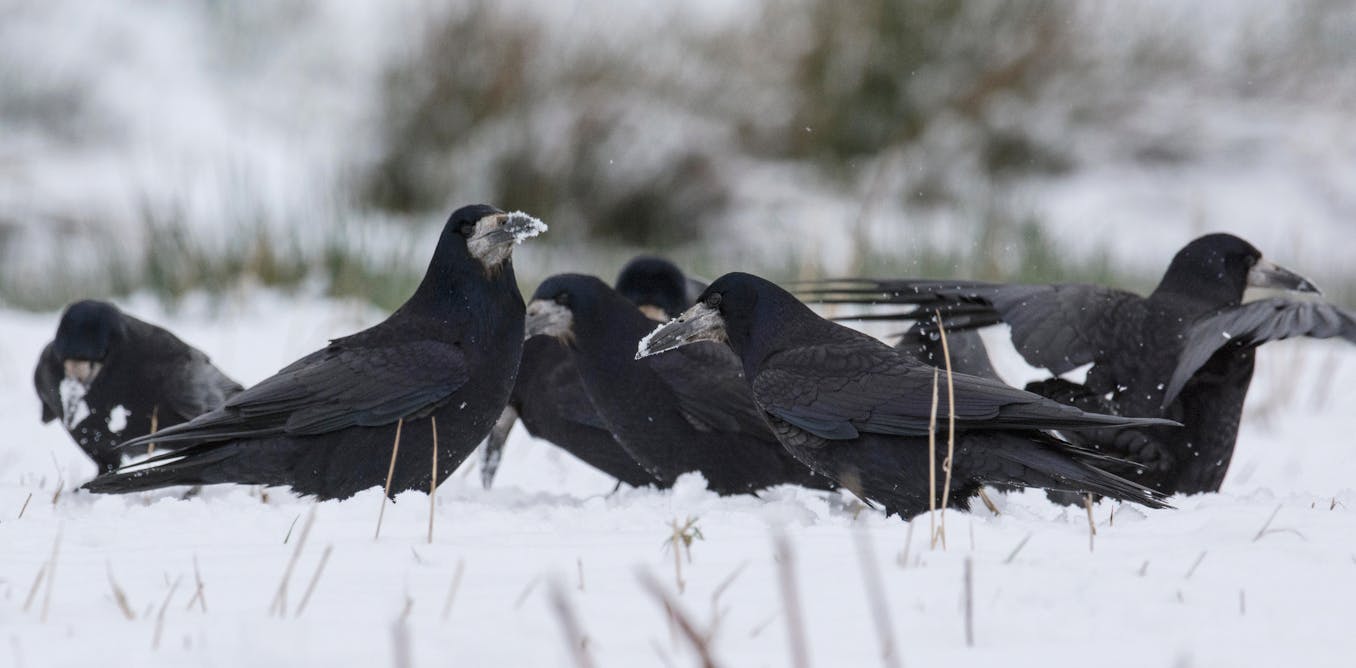Polar bears (Ursus maritimus) take advantage of the winter to build up their fat reserves. Intensive hunting of seals, a resource rich in fat, allows bears to store up enough energy to get through the summer.
As the climate warms, hunting opportunities on the ice pack are diminishing. Experts believe that as a result, there is not sufficient food resources on the land to allow bears to build up the energy reserves they require.
Faced with these changes, some polar bears are taking advantage of colonies of nesting birds and their eggs, one of the few resources readily available on land, to compensate for their energy deficits. The adaptations that bears will have to make to meet the challenges brought about by climate change are numerous and unpredictable.
As a student researcher in ecology, I was going to take advantage of a short trip north of Baffin Island, in Nunavut, to do some work on the small fauna of Bylot Island. One afternoon, a polar bear decided otherwise. Here we report on his exploits, which led to observations of unprecedented behaviour.
An unusual sighting – a polar bear in fresh water
It was Aug. 8, 2021. Some 80 km from the Inuit community of Mittimatalik, the Bylot Island field station was bustling with activity.
Established 30 years ago, the field station is located in the heart of the breeding grounds of the largest known colony of snow geese (Anser caerulescens caerulescens). Today, scientists from a variety of backgrounds scour the Quarliktuvik valley floor, which is generally flat, to study the soil, water, plants and wildlife.
(Tim Moser), Fourni par l’auteur
Coming out of a ravine, one of the few landforms in the area, I was scanning the valley with my binoculars when two pairs of legs in the distance caught my eye. The image was foggy, but what I initially thought were two colleagues walking side by side, turned out to be the distinctive shape of a polar bear. Everyone in our group had the necessary protective equipment — bear spray, anti-bear cartridges and sometimes even a rifle — but I alerted them by radio and immediately returned to the field station.
Several colleagues had gathered on a small hill to keep an eye on the newcomer. In fact, by the time I’d covered the kilometre distance to the camp, the bear had walked three kilometres and was moving around a pond where geese were gathered. At this time of year, the geese are moulting — and therefore unable to fly — so they congregate near ponds to avoid the Arctic fox (Vulpes lagopus), which is reluctant to jump into the water. With a bear in the vicinity, we ceased our field activities and took advantage of the radiant afternoon to watch the king of the ice pack.
True to form, the geese took refuge in the nearest pond at the first sight of danger. They waded in quickly enough to keep the bear, who was swimming on the surface, at a safe distance.
But the bear was about to use a new hunting technique: he dove under the water, disappeared from the eyes of the geese who had stopped fleeing, and emerged from underneath one of them.
My colleague Mathilde Poirier recorded the behaviour in her notebook:
1:45 p.m. – 2:00 p.m.: the bear swims in the lake […], makes 4 dives to try to catch a goose. Succeeds in its 4th attempt (catches the goose from below, during a dive).
During the afternoon, the bear used this technique two more times, once failing and once with success.
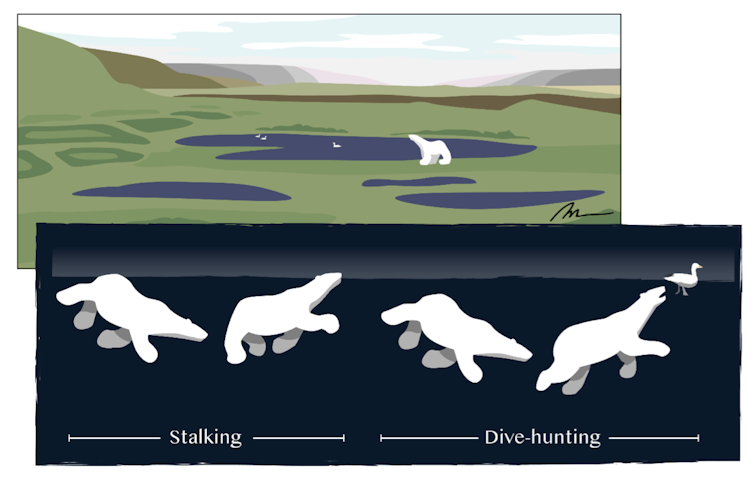
(Madeleine-Zoé Corbeil-Robitaille), Author provided (no reuse)
What are the benefits of this behaviour for bears?
Two months later, back at Laval University, we were still fascinated by this observation. Nowhere in the scientific literature is there any mention of such behaviour. At best, there are reports of attacks on murres in the ocean near the coasts, an environment very different from the calm, shallow ponds where we observed the bear’s attacks.
Being aware of the energy challenges bears face during the summer, our research group — led by Matthieu Weiss-Blais — wanted to answer the following question: would this hunting technique allow polar bears to benefit from eating snow geese?
The information recorded in the field, i.e. the time the bear spent swimming and its success in hunting, allowed us to answer this question. By combining our observations with estimates of the energy cost of swimming in bears and the energy contained in a snow goose, we were able to model the energy efficiency of the technique.
These calculations reveal that this hunting technique could allow bears to acquire more energy than they expend, particularly for smaller bears, and if they manage to catch a goose quickly.
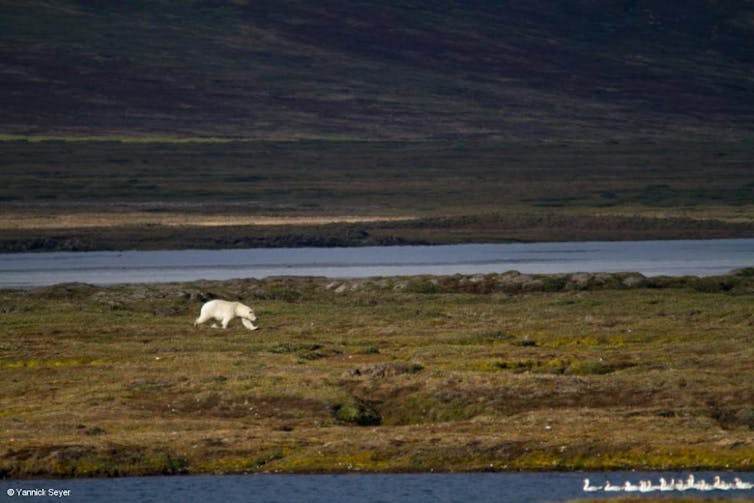
(Yannick Seyer), Fourni par l’auteur
An energy boost, but far from sufficient
However, this energy contribution would be very limited in scope.
First of all, a goose provides relatively little energy — around 200 times less than a ringed seal weighing 45 kilograms.
What’s more, the geese are rarely available as prey: they lose the ability to fly for only three or four weeks each summer and they only have colonies in a few places in the Arctic.
Hunting geese could therefore be of benefit to certain bears from time to time, but on a population-wide scale, it will not alleviate the energy deficits caused by the melting ice pack.
Although our observation highlights the range of behaviours bears can adopt in order to exploit terrestrial resources, this type of interaction between snow geese and polar bears should have no impact on the populations of either species.
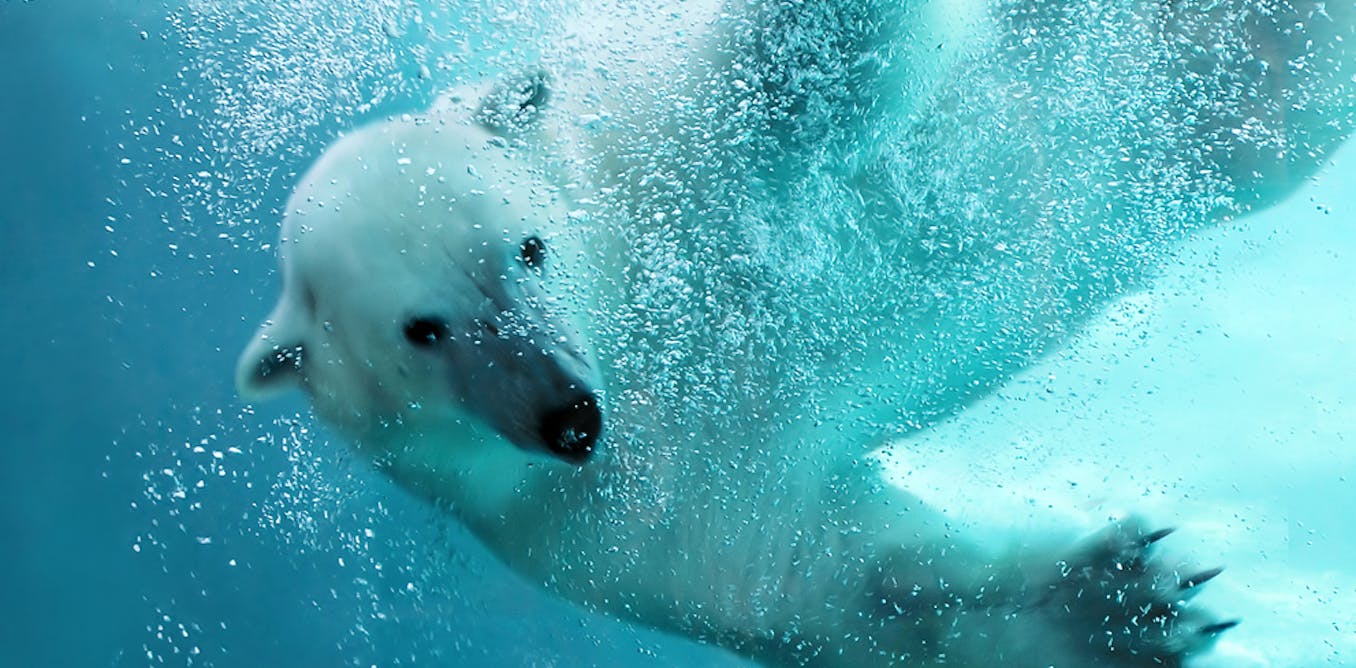
The post “When polar bears hunt snow geese, hunger justifies the means” by David Bolduc, Étudiant au doctorat en écologie animale, Université Laval was published on 01/09/2024 by theconversation.com












